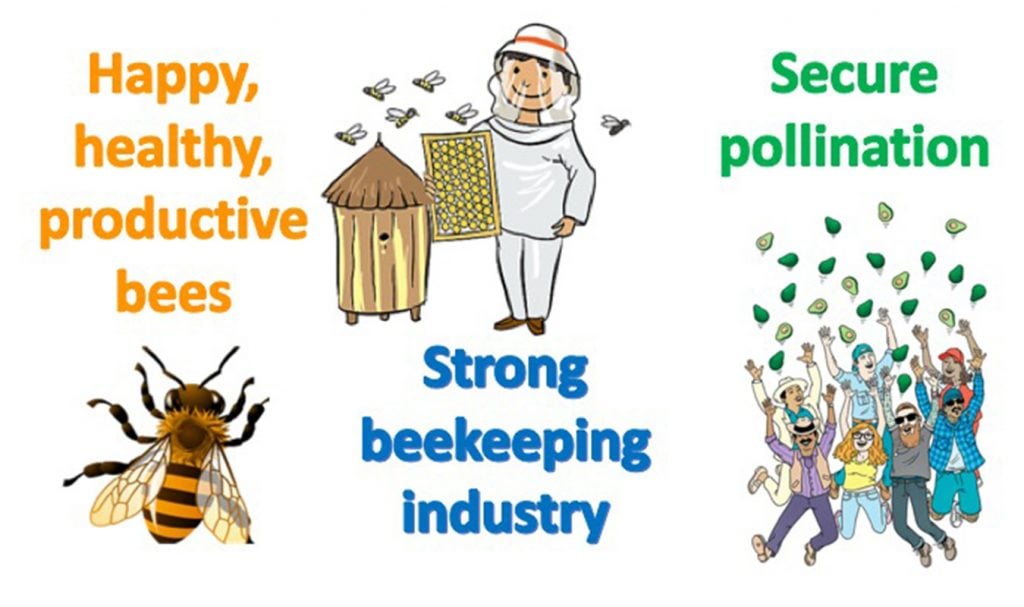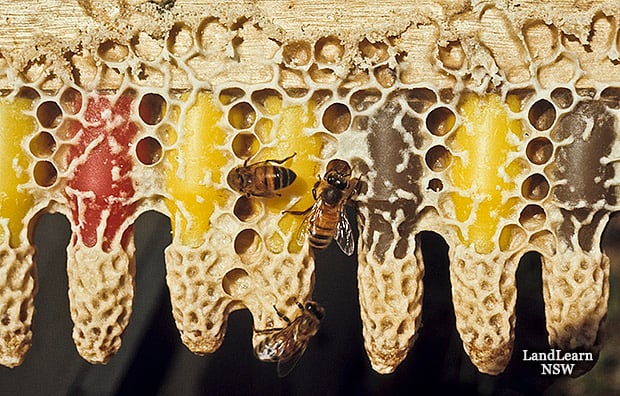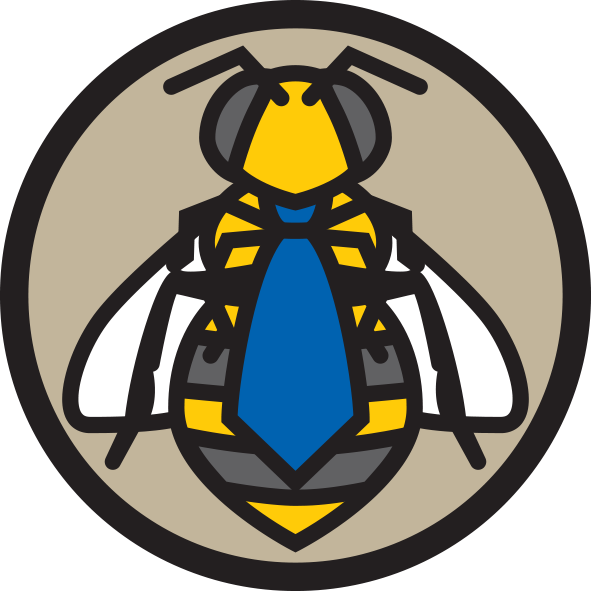Our national honey bee genetic improvement program (Plan Bee) seeks to create a sustainable breeding program using innovative technologies to transform the performance of honey bees in Australia. Many breeding programs have contributed to the industry, so how is this one different?
The program is ‘decentralised’
We will breed queens at NSW DPI. However, we do not expect to supply all the queens needed by industry from this stock (nor do we want to). It may not be appropriate for a beekeeper in Tasmania to choose queens on the basis of how they perform in northern NSW. Different traits will be needed, and the queens may not perform as well in Tasmania as they did in NSW.
Rather, we want to assist queen breeders in improving their own stock, if they choose to work with us. Queen breeders will continue to select for the traits that they and their customers are interested in. The data they collect when evaluating their queens can be entered into a database with pedigree information and estimated breeding values will be generated. This will provide the breeder with additional tools and information when they make their breeding decisions.
Is that a big deal? We think so. It gives power to the breeders. It retains the genetic diversity we have in the industry. It means that improvements can be made on any stock. It gives assurance that the methods used are appropriate. Hopefully it will lead to stock suitable for different environments being available. Any breeder who is willing to collect data and provide pedigree information can get involved.
A problem with past programs was often a lack of support in the form of queen purchases. There were likely a number of factors that contributed to this. We hope that this model will help to overcome some of those factors, due to providing increased choice for consumers by including more stock and queen breeders in the program.

Plan Bee will benefit not only queen breeders and beekeepers, but the industries that depend upon honey bees for pollination services. This project is important for securing our food supply.
The database and Estimated Breeding Values (EBVs)
Breeding bees is hard and time consuming work. These efforts must be rewarded if breeders are to continue breeding better bees. The database and EBVs provide a measure of the difference being made and this will become a valuable tool for bee breeders. EBVs help bee breeders to understand and track the value of their stock, to show that their stock is improving year by year.
A breeding program has been running in Germany since the 1960s. Honey production was improving by 0.03% per year in the early years (Bienefeld 2016). Following the implementation of methods to calculate estimated breeding values the rate of progress was 13 times higher, 0.61% per year. The same effort went into assessing colonies for this trait, but the change in methods used to select queens meant that the work had a greater payoff. The same effect was seen for selection for temperament, Varroa resistance, and reduced swarming drive.
EBVs require evaluation of colonies with approved methods, and information of genetic relationships between the queens that were evaluated either via pedigree records or genetic testing. Breeders already collect some of this information, they just haven’t had the tools to make the most of it. A national database will enable this.
Building the queen breeding industry

Bees management mature plastic queen bee cells
Our aim is to build the queen breeding industry. To have beekeepers recognise the importance and value of breeding. To drive demand for quality queens. To unlock the potential in the beekeeping industry by producing bees that make more money due to increased production and lower costs of disease management. We want as many people as possible to benefit from the program. The ability to measure progress will go some way to reassuring people that the program makes a real and significant difference. Upskilling our industry to use the new tools, and in understanding how they work, will be key. As will making information accessible.
Honey bee pollination dependent industry involvement
For the first time we have honey bee pollination dependent industries involved in an Australian honey bee genetic improvement program. Just as we want to unlock the potential of the honey bee industry, we want to unlock the potential of honey bee pollination dependent industries, by improving pollination outcomes. We need a strong honey bee industry to provide enough colonies for pollination. We need those colonies to be strong and healthy. We need more information on how to improve pollination services via management techniques, and stronger partnerships between these industries. This program will help to build these elements.
Past programs have often relied on support from a levy on honey, which is paid by those that sell more than 1,500 kg of honey per year. Honey levies also support biosecurity, chemical residue testing, membership to Plant Health Australia, and other research. The level of investment required to initiate a program using these genetic techniques kept it out of reach for the industry on its own. Recognition of the importance of the honey bee industry by the Federal Government Department of Agriculture, Water and the Environment and our project partners makes the program possible and shares the load. We will examine new models for funding the program in the future, to ensure that the program is economically sustainable long-term.
Audio: David Briggs, treasurer or the Australian Queen Bee Breeders Association, tells us how he thinks Plan Bee differs from previous programs, and why he’s excited about the program.
Greater involvement of industry
This project is led by the needs of industry, as communicated via surveys and workshops. We want to know what traits are important to beekeepers, and what information you would like to have when making decisions about where to purchase queens, as some examples. The 2020 survey is still open, please get on board to give your views. We also want to get a better idea of the challenges faced by agronomists and pollination service providers when it comes to pollination. More surveys and workshops to follow!
Currently we are seeking feedback from queen breeders on our trait selection manual. Please feel free to contact Liz (
el*************@dp*.au
) or Nadine (
na************@sy****.au
) for a copy of the manual or to provide feedback. Your opinions are very important to us.
The program will only be as strong as the support and involvement we get from industry; together we are stronger.
Acknowledgements:
- Plan Bee (National Honey Bee Genetic Improvement Program) is supported by funding from the Australian Government Department of Agriculture, Water and the Environment as part of its Rural Research and Development for Profit program. The project is further supported by AgriFutures Australia, the Department of Regional NSW (formerly NSW DPI), University of Sydney, Animal Genetics and Breeding Unit, Better Bees WA Inc, Wheen Bee Foundation, CostaGroup, Olam, Beechworth Honey, Monson’s Honey and Pollination, Auston, South Pacific Seeds, and commercial beekeepers.
- Bienefeld K (2016) Breeding success or genetic diversity in honey bees? Bee World 93: 40-44
- This article was peer-reviewed by Elizabeth Frost, Fiona Chambers and Corinne Jordan.

